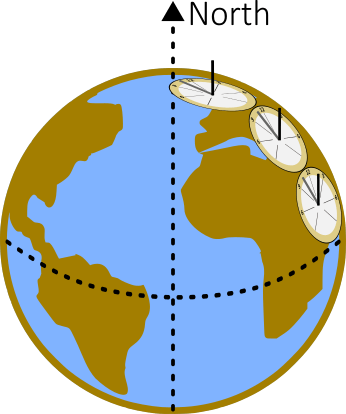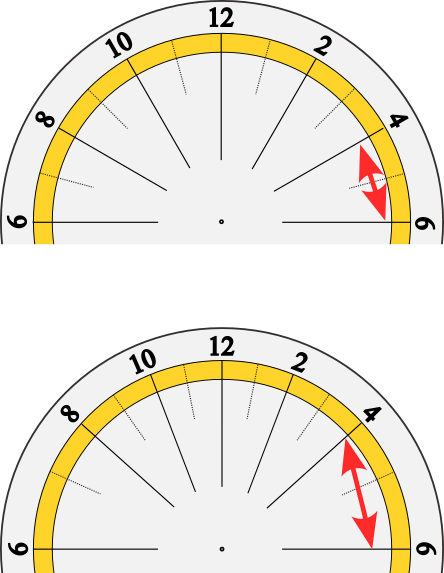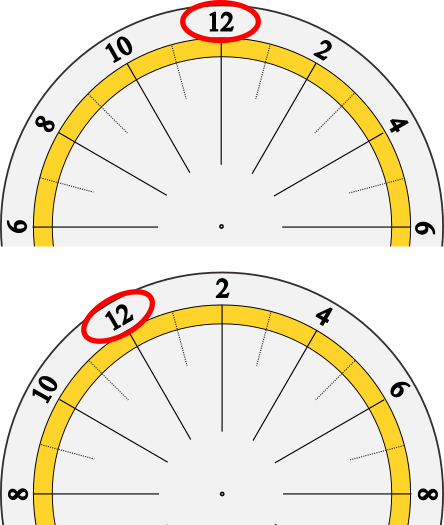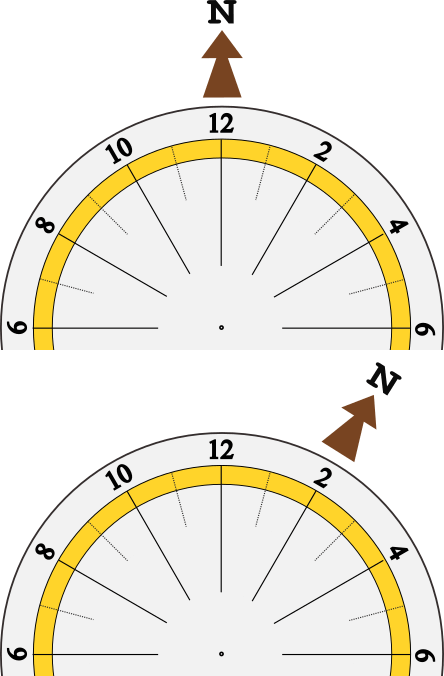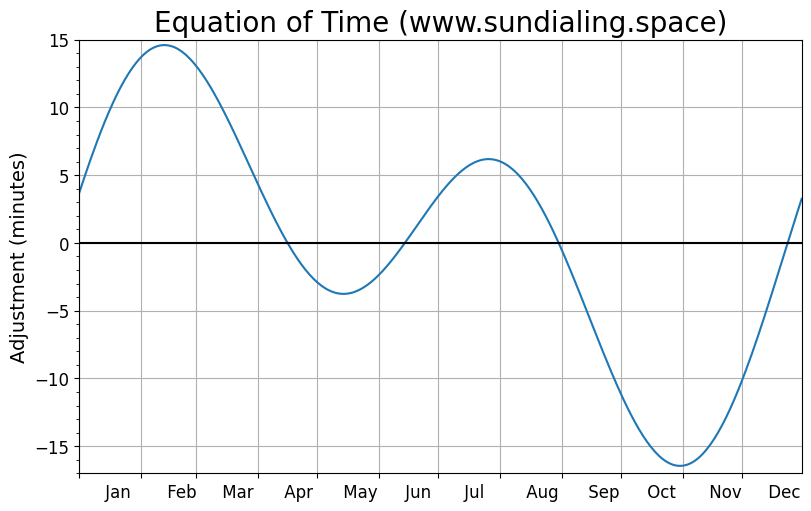What Makes an Accurate Standard Time Sundial?
Making an accurate sundial is not trivial, the traditional stick in the ground may give the correct time at noon and be off by 2 hours at sunset. It may work well for a few days and be significantly off for the rest of the year.
In this page we show the calibrations required to get the best possible sundial that works accurately throughout the entire year.
Sundial Calibrations
Here are the main calibration steps to get an accurate sundial.
Gnomon Inclination
The gnomon has to be parallel to the earth’s axis.
Why? A correctly aligned gnomon will cast a shadow that moves with a constant speed throughout the year.
How? Set the gnomon to an angle equal to the latitude of your location.
As an example if you’re at 45º latitude, the gnomon should be inclined 45º from the horizontal.
Hour Line Calibration
The sundial hour lines need to be adjusted according to the latitude.
Why? The closer we get to the equator, the higher the sun rises in the sky during the day, and the circular motion of the gnomon shade becomes more elliptical.
How? To calculate the hour line angle on a solar time horizontal sundial use the formula:
angle = arctan(tan(15º * (hour - 12)) * sin(latitude)).
Where:
angle= Angle of the hour linehour= Hour in 24h formatlatitude= Latitude of your location
You can also use the Sundial Builder to create a standard time sundial for your location.
Standard Time Rotation
To have a standard time sundial, the hour lines must be rotated to adjust for the difference between standard time and solar time in your location.
Why? Typical sundials display apparent solar time which changes according to your longitude. For instance, apparent solar time changes ~20 minutes between Philadelphia and Pittsburgh which are ~5º (~410Km) apart. However, standard time is the same in both cities.
How? To adjust the sundial to local time use the formula:
std_t = solar_t + tz_offset - longitude/15
Where:
std_t= Standard time in hourssolar_t= Solar time in hourstz_offset= Timezone offset from GMT in hourslongitude= Longitude in degrees
You can also use the Sundial Builder to create a standard time sundial.
North Alignment
The sundial must be aligned to the true north (or south in the southern hemisphere).
Why? A misaligned sundial will have a constant deviation in the shadow, which will distort the displayed time.
How? There are a few ways:
- Using a compass, however it’s hard to get an accurate enough alignment this way due to the needle length, magnetic north deviation and interference of other magnetic fields.
- Alignment with the north star (Polaris) on the northern hemisphere.
- Probably the easiest way is to rotate the sundial for the shadow match the correct time.
Equation of Time Adjustment
Equation describes the difference between apparent solar time and mean solar time. Adjust the sundial time according to the equation of time.
Why? Even the best calibrated sundial will be off by a few minutes depending on the time of year. This is caused by:
- Earth has an axial tilt of 23.4º.
- Earth has an elliptical orbit around the sun.
The effect is that the solar day is sometimes slightly longer or shorter than 24 hours, causing the solar time to be ahead or behind the standard time.
How? Add or subtract the minutes from the Equation of Time to the sundial time.
